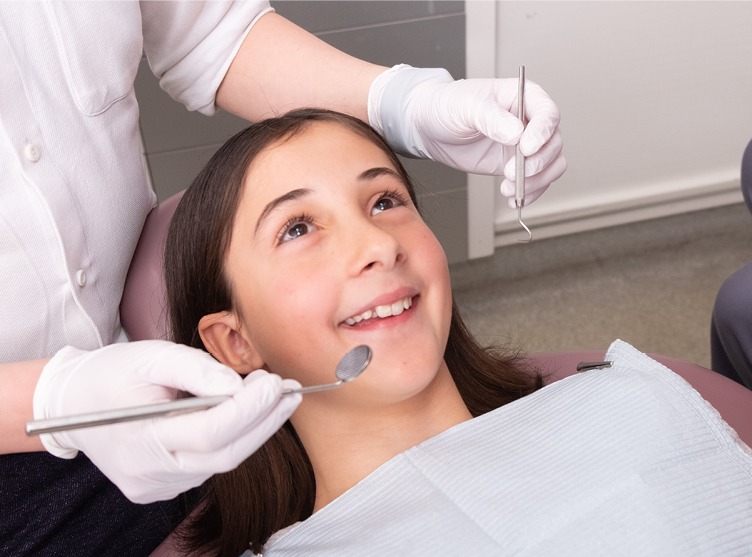The 8-Second Trick For Legacy Orthodontics
The 8-Second Trick For Legacy Orthodontics
Blog Article
Legacy Orthodontics for Beginners
Table of ContentsMore About Legacy OrthodonticsRumored Buzz on Legacy OrthodonticsLegacy Orthodontics Fundamentals ExplainedLegacy Orthodontics Can Be Fun For EveryoneThe smart Trick of Legacy Orthodontics That Nobody is Discussing
In enhancement, we offer adjustable treatment schedules, flexible payment options and a fun, enjoyable experience.An orthodontist is a dental professional educated to identify, prevent, and deal with teeth and jaw abnormalities. They correct existing conditions and are educated to identify troubles that might develop in the future. Orthodontists collaborate with people of any ages, from kids to grownups. Individuals typically associate a perfect smile with healthiness.
Malocclusion, or misaligned teeth, can bring about oral concerns, including dental caries, gum illness, and hard or agonizing chewing. Yet not everyone is birthed with straight teeth. If you have a poor bite or huge spaces between your teeth, you may wish to consult a dental expert concentrating on orthodontic care.
The Main Principles Of Legacy Orthodontics
( Photo Credit Report: DigitalVision/Getty Images) Orthodontists utilize repaired and detachable oral tools, like dental braces, retainers, and bands, to change the placement of teeth in your mouth. Orthodontic therapy is for dental irregularities, including: Jagged teethBite issues, like an overbite or an underbiteCrowded teeth or teeth that are also far apartJaw misalignmentThe goal of orthodontic therapy is to improve your bite.
A healthy and balanced bite ensures you can consume, eat, and speak correctly. While you may assume of orthodontists as mainly for children or teens that need braces, they can fix dental troubles at any type of age. Orthodontists attend university, dental school, and orthodontic school. After graduation, they spend 2 or 3 years in an orthodontic residency program.
, but not all dentists are orthodontists. They focus on 2 locations: Exactly how to effectively and securely relocate teeth How to effectively lead advancement in the teeth, jaw, and faceOnce an orthodontist has actually finished training, they have the choice to end up being board licensed.
All About Legacy Orthodontics
Malocclusion leads to tooth overcrowding, an irregular jaw, or uneven bite patterns. Malocclusion is typically treated with: Your orthodontist affixes steel, ceramic, or plastic square bonds to your teeth.
If you have just minor malocclusion, you may be able to use clear braces, called aligners, rather of typical dental braces (https://www.bark.com/en/us/company/legacy-orthodontics/akk7YG/). Some people need a headwear to assist move teeth into line with pressure from outside the mouth. After dental braces or aligners, you'll require to use a retainer. A retainer is a custom-made gadget that keeps your teeth in location.
They can develop additional space in the mouth without having to draw teeth. Orthodontists utilize wires, surgical screws, or plates to support your jaw bone.
You may need to see an orthodontist if you have: Crowding or not adequate area for all of your teethOverbite, when your upper teeth come over your base teethUnderbite, when your bottom teeth are too much forwardSpacing or concerns with gapsCrossbite, which is when your top teeth fit behind your base teeth when your mouth is closedOpen bite or a vertical gap in between your front base and upper teethMisplaced midline, when the center of your bottom and upper teeth do not line up Correcting a dental malocclusion can: Make attacking, chewing, and talking easierImprove the proportion of our face and your general appearanceEase discomfort from temporomandibular joint conditionsDifferent your teeth and make them less complicated to cleanse, aiding stop dental caries or cavities It's typically a dental practitioner who first notifications misaligned teeth during a routine examination.
The Ultimate Guide To Legacy Orthodontics

Throughout your very first orthodontic assessment, you'll likely have: An oral examPhotos taken of your face and smileDental X-raysPanoramic (360 level) X-rays of your face and headImpressions to produce molds of your teethThese examinations will help your orthodontist recognize exactly how to continue with your treatment. orthodontist. An orthodontist is a dental practitioner who's had training to treat your teeth and jaw
An orthodontist is focused on your bite, so something like a cracked tooth would be managed by a dental professional. Orthodontists are concentrated on your bite, or the method your teeth fit with each other, and the straightness of your teeth.
Ever before questioned exactly how celebs always seem to have completely straightened teeth? The solution typically hinges on the knowledgeable hands of an orthodontist. But just what does an orthodontist do? Orthodontists are oral professionals who concentrate on correcting abnormalities in the teeth and jaws. Their linked here expertise surpasses simply creating an attractive smile; it encompasses improving your total dental health and feature.
How Legacy Orthodontics can Save You Time, Stress, and Money.

While dental braces are one of the most frequently acknowledged orthodontic treatment, orthodontists have a diverse toolkit at their disposal. The particular method chosen relies on the intensity of the case, the patient's age, and individual choices. These tried-and-true braces use a system of braces bound to the teeth and attached by cables.
Clear aligners, like Invisalign, are a preferred option for patients looking for an extra discreet therapy alternative. These removable trays are tailor-made to considerably change the teeth's setting. Headwear may be used combined with dental braces or aligners to use additional targeted pressures, specifically for dealing with jaw disparities. In cases of narrow jaws, palatal expanders can be made use of to develop room for correct tooth positioning.
Report this page